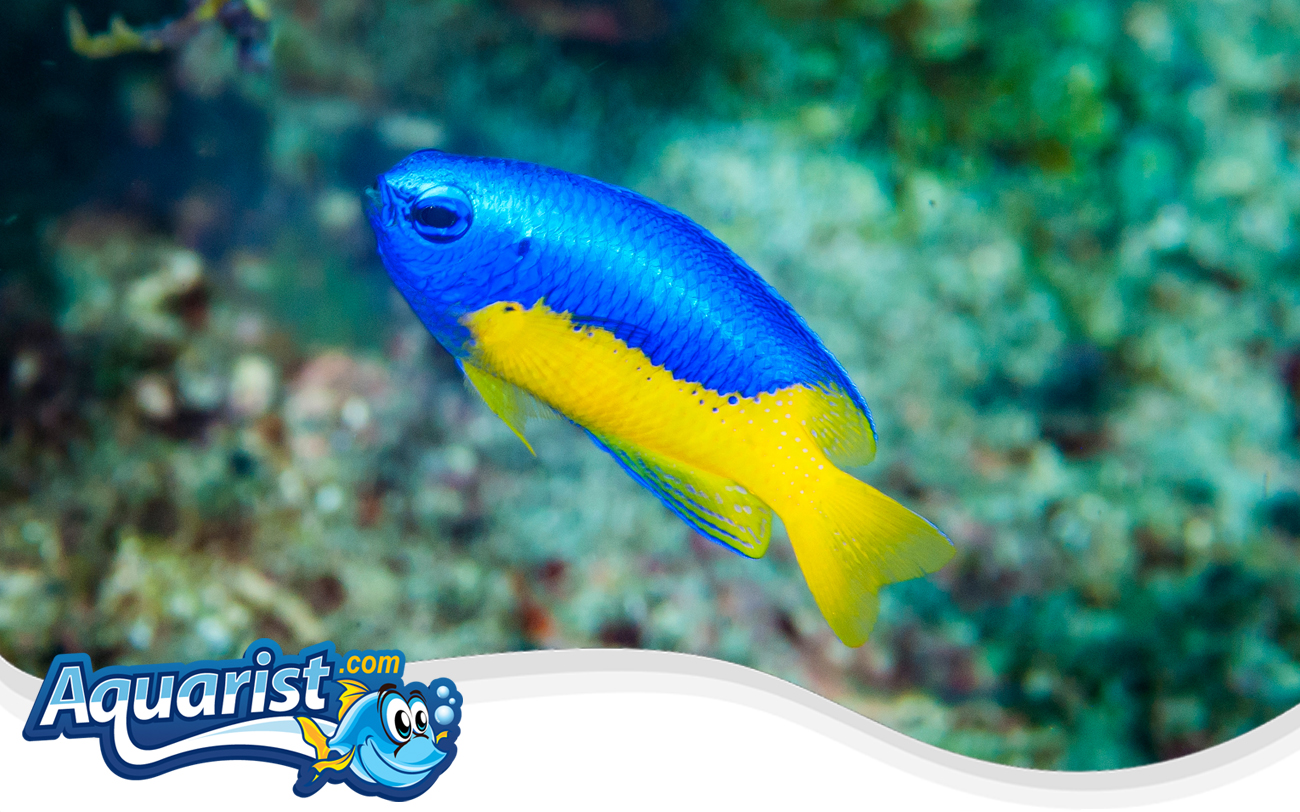Overview
- Native to the Indo-Pacific, frequently found in shallow lagoons and coral-rich reefs.
- Characterized by its striking metallic blue body with a bright golden-yellow belly.
- Known for being hardy, active, and somewhat territorial; popular among marine hobbyists.
- Ideal for both beginner and intermediate aquarium enthusiasts due to its resilience.
Feeding
- Omnivorous; naturally feeds on algae, zooplankton, and small invertebrates.
- Readily accepts a variety of foods, including marine flakes, pellets, mysis shrimp, brine shrimp, and spirulina-based diets.
- Feed multiple small meals per day to maintain optimal health and coloration.
- A varied diet is important for balanced nutrition and vibrant appearance.
Habitat
- Thrives in smaller aquariums (minimum 30 gallons) with ample swimming space and live rock structures.
- Stable, mature aquarium conditions essential for long-term health and well-being.
- Provide plenty of hiding spaces and coral structures to replicate natural reef habitats and manage territorial behaviors.
- Moderate water circulation and effective filtration are important to maintain water quality.
Fish Care
- Optimal water temperature: 74-80°F (23-27°C).
- Recommended pH: 8.1-8.4; specific gravity: 1.020-1.025.
- Hardy species but sensitive to rapid water changes; regular water testing and routine maintenance essential.
- Monitor for signs of marine diseases and parasites, prompt intervention helps ensure good health.
Compatibility
- Semi-aggressive; best housed with similarly sized or slightly larger, robust tank mates.
- Generally reef-safe; compatible with corals, but may be aggressive toward smaller or more passive fish.
- Recommended tank mates include other semi-aggressive fish such as clownfish, dwarf angelfish, tangs, and robust wrasses.
- Typically territorial, especially as they mature; careful introduction and adequate space recommended.
Aquarium Behavior
- Active swimmer, frequently exploring the tank and engaging with its surroundings.
- Can become territorial, especially in smaller aquariums; provide ample hiding spaces and territories.
- Often engages interactively with caretakers, especially during feeding times.
- Best maintained in environments with clearly defined territories and peaceful tank dynamics.


